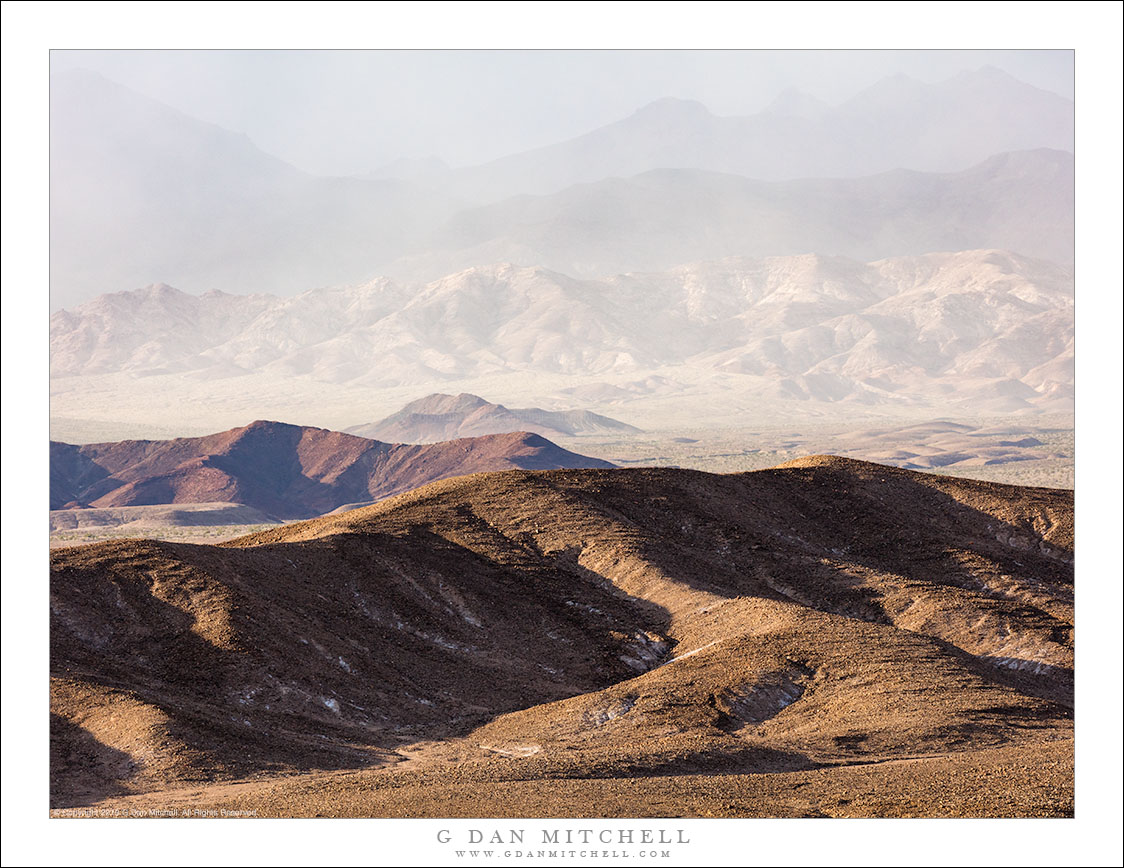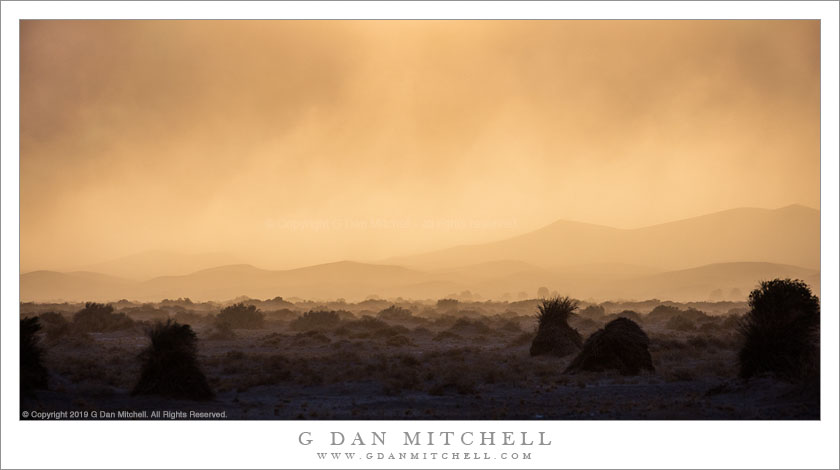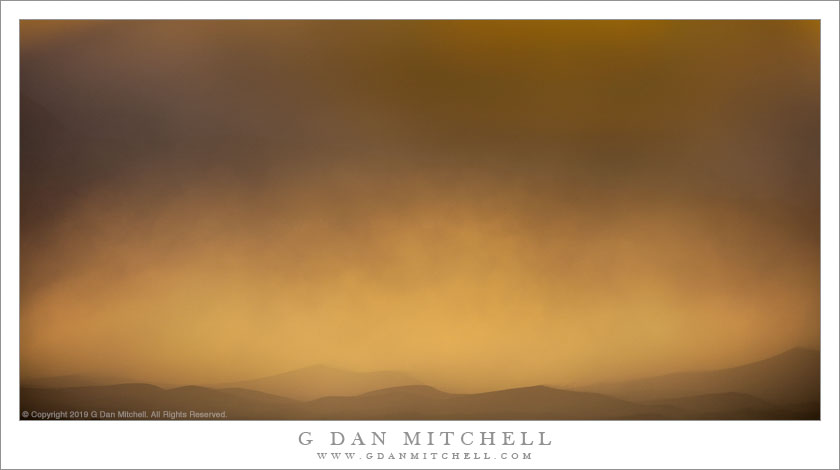
Dust Storm, Desert Hills. © Copyright 2019 G Dan Mitchell – all rights reserved.
A dust storm begins to envelope desert mountains, Death Valley National Park.
Last year we spent nearly a week in Death Valley in the Spring, photographing landscape and plants and flowers. I go every year, usually camping, but this time we stayed in one of the lodging facilities in the park, heading out from there on various one-day adventures. (I like camping in the park… but I don’t mind sleeping in a bed and eating good food either…)
We experienced some fairly big dust storms during this visit — not the biggest I’ve seen by far, but powerful enough to make an impression. One was building on this afternoon, so we headed in that direction to see what photographic opportunities might arise. Near the end of the day the sky was almost apocalyptic, with clouds above, raging dust storm below, and sunset color. But this photograph comes from earlier in the day when the effect was more subtle. We stopped close to these rounded desert hills and photographed the landscape as the more distant mountains gradually were obscured by the increasing dust.
G Dan Mitchell is a California photographer and visual opportunist. His book, “California’s Fall Color: A Photographer’s Guide to Autumn in the Sierra” is available from Heyday Books and Amazon.
Blog | About | Flickr | Facebook | Email
Links to Articles, Sales and Licensing, my Sierra Nevada Fall Color book, Contact Information.
Scroll down to leave a comment or question.
All media © Copyright G Dan Mitchell and others as indicated. Any use requires advance permission from G Dan Mitchell.



